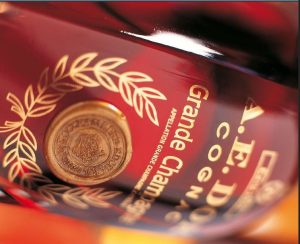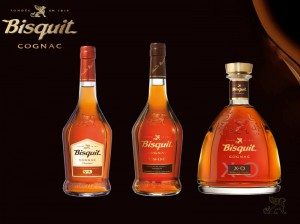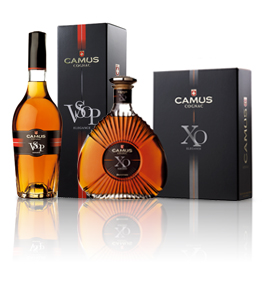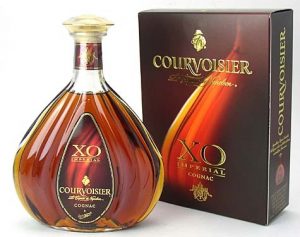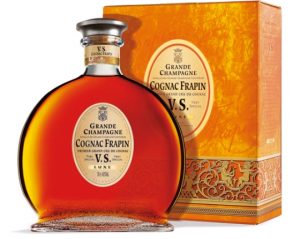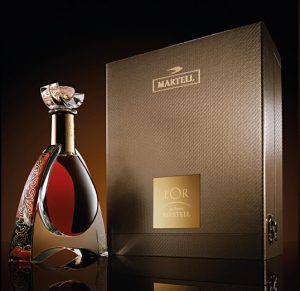Cognac
It was in the Cognac region of France where the Gauls, in the third century AD, began the cultivation of the vine as a result of a privilege granted by the Romans to put in those territories cultivation of the vine. During the eleventh century there was already a flourishing trade of wine from this region to the north. Sales in Britain, in particular, increased when Eleanor of Aquitaine (Bordeaux, France, 1122 - Fontevrault, France, April 1, 1204) married Henry II Plantagenet (Le Mans, France, March 5, 1133 - Chinon, France,July 6, 1189) making the Aquitaine an English domain during the night of December 19, 1154. Nevertheless, the high costs associated with transport and the advent on the market of much more complete wine like Bordeaux putted the trade of Cognac wines in a serious crisis in the end of the sixteenth century. Trying to get out of the crisis growers attempted distillation, that guaranteed to lower significantly the cost of transport and satisfied the tastes of consumers in the North: thus was born the spirit of Cognac. The success was immediate but other crisisis were still waiting for this drink: after a new market crisis that took place during the French Revolution of 1789, the recovery was not easy because between 1879 and 1889, while trying to return to normal, the vines were attacked by phylloxera, a pest of American origin that destroyed about 300,000 hectares. Fortunately for this spirit the German occupation of France during the second World War was not the bearer of doom. A Franco-German supervisory office was established to safeguard the work of wine growers and stocks of Cognac in aging and, when the release happened, the Cognac had an immediate recovery and supervisory office became the BNIC Bureau National Interprofessionnel du Cognac, which nowadays monitors the quality of production. The traditional site of production is the French town of Cognac, in the province of Charente, in western France. This area covers two departments, the Charente and Charente-Maritime. There are about 100,000 hectares of vineyards cultivated by over 3,000 growers. The most common grape variety is the Ugni Blanc, also known as Saint-emilionche, which is very similar to Italian Trebbiano. Colombari, Folle Blanche, Juraçon are some of the other varieties, almost disappeared, which can be used in the production of this spirits up to a maximum of 10%. The grapes are harvested in autumn and the must is fermented without add sugar or sulfur dioxide. The wine has an alcohol volume of between 7 and 9%, more refined and elegant Cognac comes from the distillation of wine with a lower alcohol content, and is stored without additives and without sulfur because during the distillation stage it could give unpleasant tastes. The distillation process, carried out twice with Charentais alembic, begins fifteen days after the end of harvest and ends March 31 next year. It's a complex process that lasts at least 24 hours and it is produced one liter of Cognac for every nine liters of wine. Finished these operations, the obtained product will be put into oak barrels of 300 liters capacity where the aging will begin and year after year, with slow exchange with the air through the wooden slats, will make the Cognac to lose its initial animosity, building the aroma, bouquet and classic elegance. During first fifteen years of aging there will be a loss in the 6-8% alcohol by volume, called the "Part des anges", "the quote of the angels". These alcohol vapors get the walls of the cellars covered with a layer of soft black and a small mushroom, Torula compiancensis. The maturation is curated by a master winemaker who, through chemical analysis and especially the tasting, decides how much time Brandy must pass in the casks and in what proportions should be made the assembly, stage where it is used sometimes caramel to correct slightly the color. Matured Cognac stops to be stored in wooden barrels because it would degrade and is placed in glass bottles placed in a special cellar called "Le Paradis". The character of the spirit is determined by the area of origin and the composition of the soil. The region has a secondary layer, Jurassic to the north, with a predominance of clay, cretaceous to the center and south, with a subsoil of chalk or limestone. This last characteristic of the best lands, which are those of the Champagne. Depending on the different types of soil there are distinguished six main areas (in order of merit): the Grande Champagne, in the heart of the region, about 13,000 hectares, is the premier cru of Cognac. The climate is slightly influenced by the sea and earth, made of limestone and shale rich of calcium carbonate, allows the production of fine spirits, fragrant, delicate and very persistent to the taste; the Petite Champagne, approximately 16,000 hectares, from the firm ground of sand and clay. The climate, subject to the marine influence and more rainfall, creates fine and more elegant spirits but with less ability to age; the Borderais, about 4000 hectares, has an acidic loamy soil. The spirits are "round", characterized by a higher alcohol content and therefore often used for assemblies; all around the three previous crus there are the Fins Bois, about 37,000 hectares. Clay and limestone soils. The produced spirits are soft and round and mature very fast. Here it is produced 40% of all Cognac; The Bons Bois, a circular area even more outside, 16,000 hectares of vineyard, soils are poor of calcium. The spirits are light, thin but rather rough and of short duration; Bois Ordinaires or Bois Communes cover the outer part of the region with almost 30,000 hectares of vineyard. The alluvial Land of the Quaternary give rise to ordinary spirits with a certain salinity, strong and robust flavor, used mainly for fruit in alcohol. The nobility of Cognac depends on its origin and its age and the extreme grade is Grande Champagne Cognac, which can come only from the homonymous region. Follows the Petite Champagne region always homonymous. Fine Champagne Cognac is a blend of Grande Champagne and Petite Champagne, which must contain at least 50% of Grande Champagne. Other local names are hardly reported on the label. For the calculation of the age it is considered the “compte d'age”. Just after Cognac is distilled it has "compte 00", on April 1 of each following year in succession we have the "compte 0", "compte 1", and so on. The control is insured up to the "compte 6". Cognac may not be sold before it has reached an age equal to "compte 2". The existing categories based on age are: "Trois Etoiles or V.S.", "compte 2", "VO" (very old), "VSOP" (very superior old pale), "Reserve", "compte 4", "Napoleon". On the bottle it is not possible to indicate the year of harvest and distillation. Cognac, which usually has an alcohol volume of 40%, is typically drinken in a glass balloon at room temperature. To receive the best aromas it's advised to heat the glass, keeping it in the palm of the hand; it is also used in many cocktails and in the production of the Grand Marnier and "Pineau des Charentes", wine of the same region obtained from the mixture of wine and Cognac.

